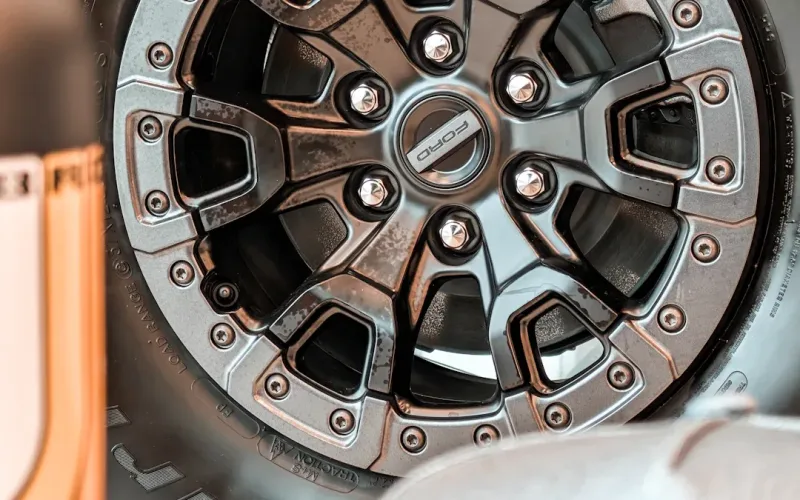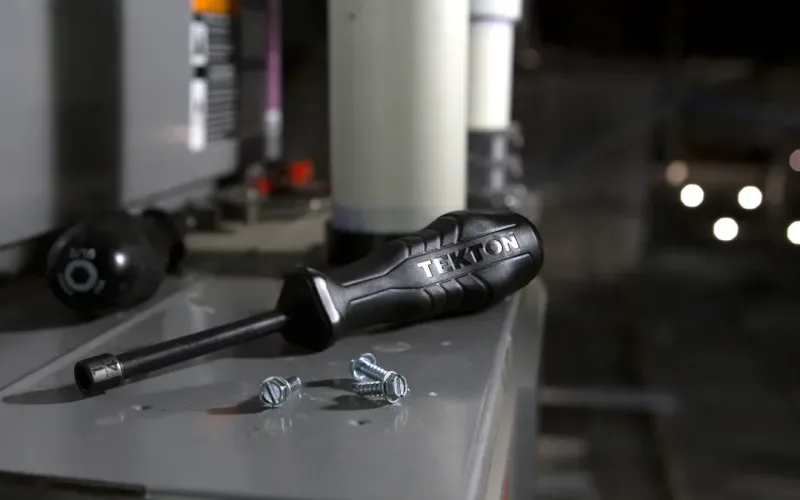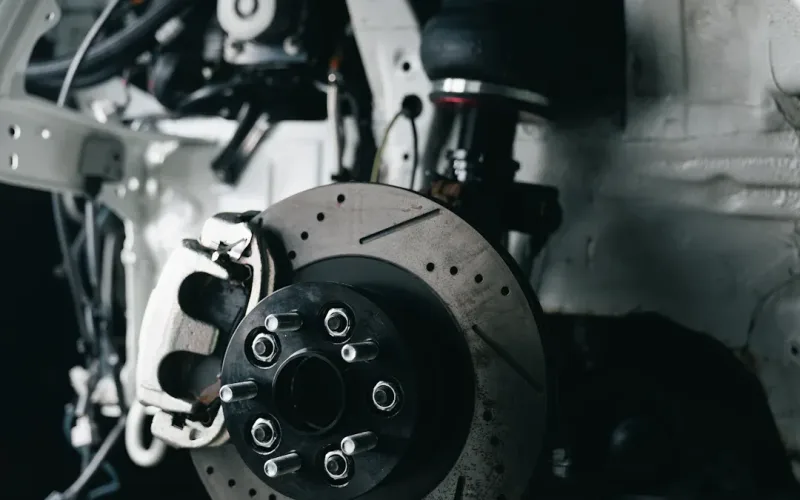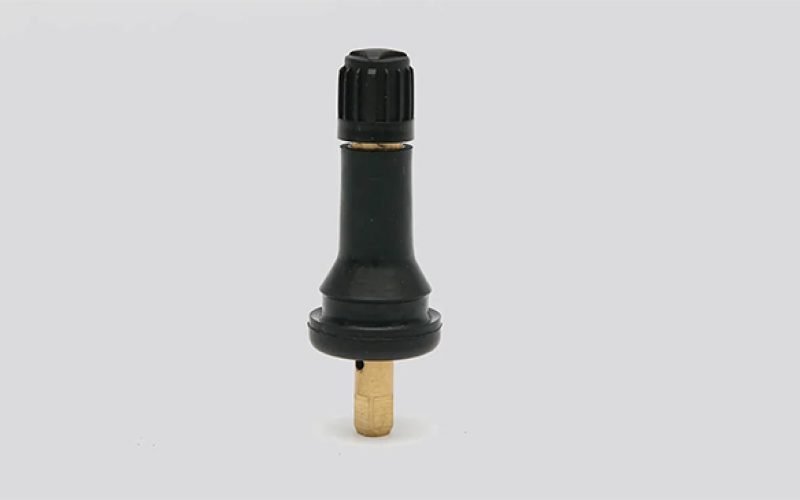

admin1
September 4, 2025
Understanding Tire Valve Stem Sensors for Modern Vehicles
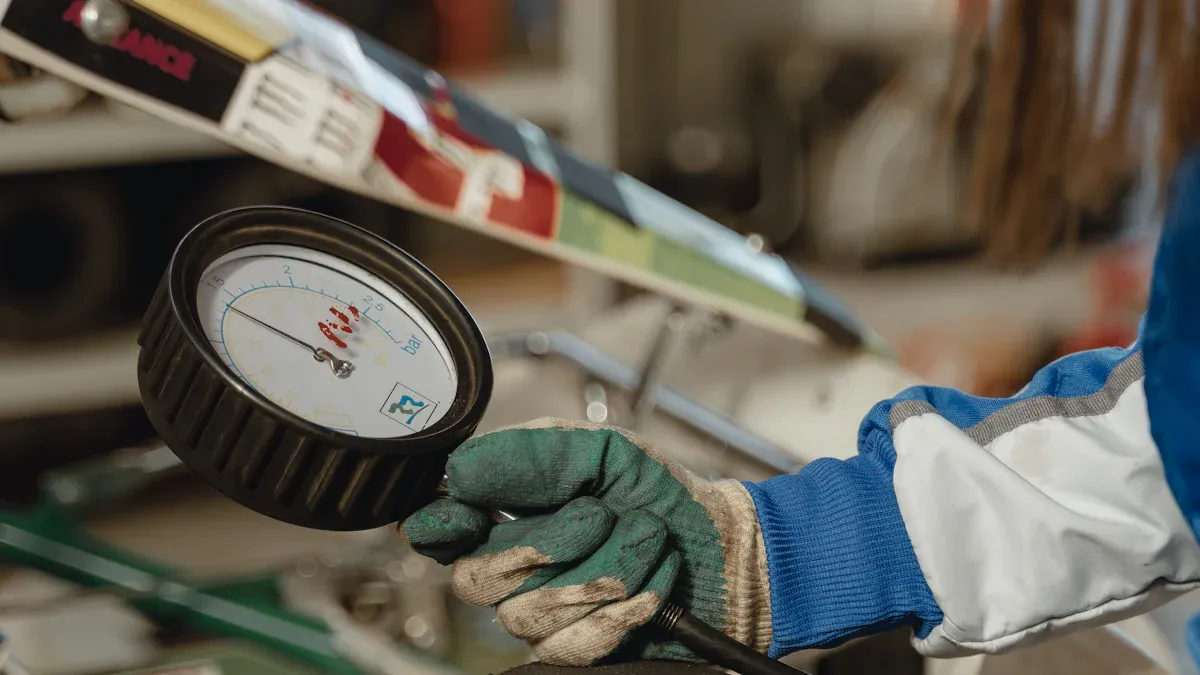
You rely on your vehicle to keep you safe on the road. A tire valve stem sensor sits either on the valve stem or inside the tire, checking air pressure and sending updates straight to your dashboard. Since 2007, nearly every new car includes this sensor because regulations require tire pressure monitoring systems in all light vehicles. This technology helps you spot problems early and avoid unexpected tire issues.
What Is a Tire Valve Stem Sensor?

Role in the Tire Pressure Monitoring System
You depend on your tire valve stem sensor to keep you informed about your tire pressure. This small device plays a big part in your vehicle’s tire pressure monitoring system, or TPMS. The TPMS uses these sensors to check the air pressure in each tire. When the pressure drops below a safe level, the system sends a warning to your dashboard. This helps you avoid driving on underinflated tires, which can lead to accidents or poor performance.
The tire valve stem sensor works as the main communicator between your tires and your vehicle’s control unit. It monitors tire air pressure and sends this information to the TPMS. If the pressure falls too low, the sensor triggers a warning light on your dashboard. This alert gives you time to fix the problem before it becomes dangerous.
Here is a table showing the main components of a tire valve stem sensor and their functions:
| Component | Function |
|---|---|
| Valve Stem Body | Houses the valve core and connects to the tire, maintaining air pressure. |
| Valve Core | Seals tire pressure inside the tire, preventing air from escaping. |
| Valve Stem Cap | Protects the valve core from dirt and moisture, ensuring proper sealing. |
You can see that each part of the sensor has a specific job. Together, they help the TPMS keep your tires at the right pressure.
Tip: Keeping your tire pressure at the recommended level improves safety and fuel efficiency.
How the Sensor Collects and Sends Data
You might wonder, how do tire pressure sensors work? The answer lies in the technology inside each sensor. Each tire valve stem sensor is a small, battery-powered device. You will find it either mounted inside the tire or attached to the valve stem. The sensor measures both air pressure and temperature in real time.
The sensor collects data and sends it wirelessly to your vehicle’s computer system. It uses a tiny radio transmitter to send signals. When the tire pressure drops, the sensor sends a message to the TPMS control module. The system then activates a warning light on your dashboard. This process happens automatically, so you always have up-to-date information about your tires.
Here is how the process works:
- The tire pressure sensor checks the air pressure and temperature inside the tire.
- It transmits this data wirelessly to the TPMS control module.
- The control module receives the signal and checks if the pressure is within the safe range.
- If the pressure is too low, the system alerts you with a dashboard warning.
You benefit from this real-time monitoring because it helps you spot problems early. TPMS sensors keep you informed and help you maintain the right tire pressure for safety and performance.
If you ask, “How do tire pressure sensors work?”—they use advanced electronics and wireless communication to keep you safe on the road. Each sensor collects data and sends it to your vehicle’s central control unit at regular intervals. This ensures you always know the condition of your tires.
How a Tire Pressure Monitoring System (TPMS) Works
You may wonder how your car knows when your tire pressure drops. The answer lies in the technology behind tire pressure monitoring systems. These systems use sensors to keep you informed about your tire pressure and help you stay safe on the road. There are two main types of TPMS: direct and indirect. Each system works differently and offers unique benefits.
Direct TPMS vs. Indirect TPMS
When you look at tire pressure monitoring systems, you will find two main types. Direct TPMS uses a tire pressure sensor inside each tire. This sensor measures the actual air pressure and sometimes even the temperature. The system sends real-time data to your car’s computer. You get an alert right away if the pressure drops below a safe level.
Indirect TPMS works differently. It does not use a tire pressure sensor inside the tire. Instead, it relies on your car’s ABS and wheel speed sensors. The system checks how fast each wheel spins. If one tire spins faster than the others, the system thinks the tire pressure is low. This method does not measure the actual pressure. It only estimates changes based on wheel speed.
Here are some key differences between direct and indirect TPMS:
- Direct TPMS gives you better accuracy and real-time alerts.
- Indirect TPMS is less accurate and less reliable.
- Direct TPMS measures air pressure with sensors inside each tire, giving you precise readings.
- Indirect TPMS uses ABS and wheel speed sensors, so it may not always be correct.
- Direct TPMS is not affected by tire rotations or replacements.
- Indirect TPMS can miss changes if you rotate or replace your tires.
- Direct TPMS provides real-time alerts about air pressure changes.
- Indirect TPMS may need you to drive a certain distance before it warns you.
- Direct TPMS costs more but gives you better reliability.
- Indirect TPMS is less expensive but does not offer the same level of accuracy.
You can see that direct TPMS offers more benefits for safety and performance. It gives you real-time, accurate information about your tire pressure. Indirect TPMS may save money, but it does not provide the same level of protection.
Communication Between Sensors and Vehicle
You might ask how the tire pressure sensor talks to your car. Direct TPMS uses advanced radio signal technology. Each sensor inside your tire sends data to your car’s control module. The system uses a low frequency (LF) signal, usually at 125 KHz, to activate the sensors. Once activated, the sensors send information using an ultra-high frequency (UHF) signal. This signal usually falls between 314.9 and 433.92 MHz. Your car’s computer receives this data and checks if your tire pressure is safe.
Indirect TPMS works differently. It does not use a tire pressure sensor to send data. Instead, it relies on the ABS system to estimate pressure changes. The system needs you to drive a certain distance before it can detect a problem. It does not provide real-time updates like direct TPMS.
Here is a table that shows the main differences in communication between the two systems:
| Feature | Direct TPMS | Indirect TPMS |
|---|---|---|
| Data Source | Dedicated pressure sensors in tires | ABS system approximation |
| Communication | Real-time data sent to control module | Requires driving distance for alerts |
| Additional Data | May include tire temperature readings | N/A |
You benefit from direct TPMS because it gives you instant updates. The system uses radio signals to keep you informed about your tire pressure at all times. Indirect TPMS does not measure actual pressure, so it may not alert you as quickly.
Note: Most TPMS sensors use radio signals to send data. The software language can change depending on your car’s brand. Always check your owner’s manual for details about your system.
With this knowledge, you can see why direct TPMS is the preferred choice for many drivers. It gives you peace of mind by providing accurate and timely information about your tire pressure.
Why Tire Valve Stem Sensors Matter for Safety and Performance
Preventing Tire Blowouts and Accidents
You depend on your tire valve stem sensor to keep you safe every time you drive. This sensor checks your tire pressure and warns you if it drops too low. When you drive on underinflated tires, you risk blowouts and accidents. The TPMS uses these sensors to alert you before a problem becomes dangerous. According to recent studies, real-time data from TPMS sensors reduces the chance of accidents and keeps you aware of your tire condition.
Here is a table showing how tire valve stem sensors improve safety:
| Benefit | Description |
|---|---|
| Improved Safety | Real-time data on tire pressure reduces the likelihood of blowouts and accidents. |
| Increased Awareness | Alerts drivers when tire pressure drops, enabling proactive maintenance. |
| Enhanced Vehicle Performance | Well-maintained tires ensure better traction, handling, and braking performance. |
You can see that TPMS sensors help you avoid underinflated tires, which cause about 40,000 accidents, 33,000 injuries, and 650 deaths each year. By using a sensor, you lower your risk and protect yourself and your passengers.
Improving Tire Life and Fuel Efficiency
When you keep your tire pressure at the right level, you get more miles from your tires and save money on fuel. The TPMS and its sensors alert you to underinflated tires, so you can fix the problem quickly. Proper tire pressure reduces drag and helps your car use less fuel. Studies show that keeping your tires at the correct pressure can improve fuel efficiency by up to 4%. Every 10% drop in pressure means you lose about 1% in fuel efficiency.
You also extend your tire’s lifespan by about 25% when you use a tire valve stem sensor and maintain proper pressure. Here are some ways TPMS sensors help you:
- They alert you to low tire pressure, preventing blowouts and keeping you safe.
- Proper tire pressure means even wear, so your tires last longer.
- You get better traction and control, especially in bad weather.
- You save money by using less fuel and replacing tires less often.
Meeting Legal Requirements
You must follow the law when it comes to tire pressure and safety. Many countries require TPMS in all new vehicles. The TPMS must include a warning light if the system stops working. This warning must appear within 20 minutes of a problem. Here is a table showing TPMS rules in different countries:
| Country | TPMS Requirement Description |
|---|---|
| United States | All new vehicles must be equipped with TPMS since September 1, 2007, governed by NHTSA. |
| European Union | TPMS regulations phased in since November 1, 2012, for all new passenger cars. |
| Canada | Mandates TPMS in new vehicles, aligning closely with U.S. regulations. |
| China | Introduced TPMS regulations in stages starting in 2011, focusing on accuracy and performance. |
| Japan | Requires TPMS on new vehicles to enhance road safety and fuel efficiency. |
Tire valve stem sensors help you meet these legal requirements. They alert you to underinflated tires and help you pass inspections. By using a sensor, you also help the environment by reducing fuel use and lowering emissions. You stay safe, save money, and follow the law when you keep your TPMS working.
Common TPMS Issues and Warning Signs
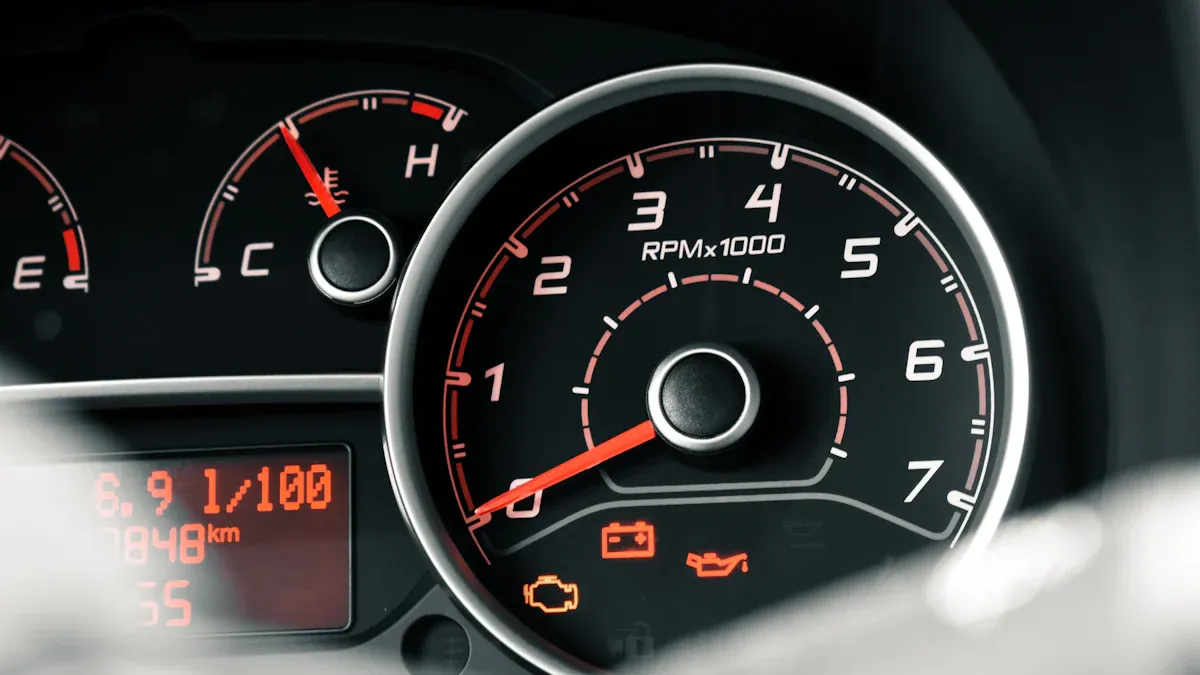
Dashboard Warning Lights
When you see the tpms warning light on your dashboard, you need to pay attention. This light tells you about a tire pressure problem or a sensor issue. The low tire pressure indicator may turn on for several reasons. Sometimes, it means your tire pressure is low. Other times, it signals a malfunction in the tpms sensors. You can use the table below to understand what each tpms warning light behavior means:
| TPMS Light Behavior | Meaning |
|---|---|
| TPMS Light On | At least one tire has low pressure. You should check and inflate your tires as needed. |
| TPMS Light Goes On and Off | Temperature changes can cause the light to turn on and off. Always check tire pressure. |
| TPMS Light Flashes and Then Stays On | This means the tpms system has a malfunction. You should have your vehicle inspected. |
A steady tpms warning light usually points to low tire pressure, while a flashing light means a sensor or system malfunction. If you see the low tire pressure indicator, check your tires right away.
Sensor Battery Failure and Physical Damage
You may wonder what happens when your tire sensors go out. Sensor batteries last about 5 to 10 years, or 60,000 to 100,000 miles. When the battery dies, the sensor cannot send data, and the tpms warning light will stay on. Physical damage is another common cause of sensor failure. Sensors face extreme temperatures, road debris, and vibrations. Hitting a curb or pothole can crack or dislodge a sensor. Improper handling during tire service can also break the sensor. If you notice inconsistent readings or the tpms warning light after tire service, you should check for damage.
Troubleshooting Steps
If you see a tpms warning light, you can follow these steps to fix the issue:
- Check tire pressure manually using a reliable gauge. This is the first step in how to check your vehicle’s tire pressure.
- Reset the tpms system after correcting any low tire pressure.
- Inspect each sensor for visible damage or corrosion.
- Drive your vehicle to allow the system to recalibrate.
- Use a tpms diagnostic tool to check for fault codes.
- Replace any failing sensors if needed.
- Consult a professional if the tpms warning light stays on.
Regular checking tire pressure and following these steps help you avoid tire pressure issues. If you want to know how to check your vehicle’s tire pressure, always use a trusted gauge and compare the readings to your car’s recommended levels. By staying alert to warning signs, you keep your tpms working and your tires safe.
Maintenance and Replacement of Tire Valve Stem Sensors
Regular Inspection and Cleaning
You keep your tpms working well by checking your tire valve stem sensors often. When you inspect your tires, look for signs of damage or wear on the sensor and valve stem. Use a plastic valve cap to protect the sensor from corrosion and make it easier to add air. Clean the area around the valve stem to remove dirt and debris. If you store your vehicle in a garage, you help protect the tires and sensors from harsh weather.
Tip: Always check your tire pressure with a reliable gauge during routine maintenance. This helps your tpms give accurate readings.
When and How to Replace a Sensor
You should replace a sensor if you notice a warning light that will not turn off, or if the sensor battery fails. Most sensor batteries last between five and ten years. When you change your tires, ask your technician to inspect the sensors for damage. Be careful during tire changes to avoid breaking the sensor. If you need to replace a sensor, follow these steps:
- Remove the tire from the wheel.
- Take out the old sensor from the valve stem.
- Install the new sensor, making sure it fits tightly.
- Reinstall the tire and balance the wheel.
- Update your tpms software if needed.
Regular checks and careful handling help you avoid sensor problems.
Choosing Quality Sensors from Trusted Manufacturers
You want a sensor that lasts and works well with your tpms. Leading brands like Continental (VDO), CDWTPS, and Schrader offer sensors with strong features. The table below shows how these brands compare:
| Feature | Continental (VDO) | CDWTPS | Schrader |
|---|---|---|---|
| OE Engineering | Yes | Yes | Yes |
| Pre-programmed | Yes | No | No |
| Corrosion Treatment | Yes | No | No |
| Air Loss Minimization | Yes | No | No |
| Installation Ease | Yes | No | No |
| Waterproof Design | Yes | No | No |
| Sealing Design | Yes | No | No |
| Global OEM Fit | Yes | Yes | Yes |
You get better reliability and performance when you choose sensors from trusted manufacturers. These companies use strict quality standards and advanced designs to help your tpms work at its best.
You play a key role in keeping your vehicle safe. Tire valve stem sensors help you monitor pressure and avoid problems on the road. When you understand how your TPMS works, you can spot issues early and keep your tires in top shape.
- Choose sensors from trusted manufacturers like Fortune for reliable performance.
Remember, regular checks and quality parts help you drive with confidence.
FAQ
What does the TPMS warning light mean?
When you see the TPMS warning light, your tire pressure is low or a sensor needs attention. You should check your tire pressure with a gauge. If the light stays on, ask a technician to inspect your sensors.
How often should you replace tire valve stem sensors?
Most sensors last five to ten years or about 60,000 to 100,000 miles. You should replace them when the battery dies or if you see damage. Regular inspections help you catch problems early.
Can you drive with a faulty tire pressure sensor?
You can drive, but you risk missing low tire pressure. This can lead to blowouts or poor fuel efficiency. You should fix or replace faulty sensors as soon as possible.
Do all vehicles have TPMS sensors?
Most cars made after 2007 have TPMS sensors because of safety laws. Some older vehicles do not have them. You can add aftermarket sensors if your car does not have TPMS.
How do you know which sensor is bad?
You can use a TPMS diagnostic tool to find the faulty sensor. Some cars show which tire has the problem on the dashboard. If not, a technician can test each sensor for you.
Tip: Always check your tire pressure monthly, even if your TPMS works well.


